This webpage was adapted from a presentation originally created by Executive Director, Nicole Baran, on the importance of intentional language and effective framing. The full presentation is available here: https://vimeo.com/368658922.
Table of Contents
- Using the Right Language
- Preventing Victim-Blaming
- Avoiding Passive Voice
- Re-Writing Exercise
- Examples
The Responsibility of Intentional Language
The information on this page expresses how language matters and how it changes the drafting of policies, the creation of funding allocations, and the ways in which people listen and change their minds based on these words and the way that the media frames things.
As funders, influencers and bloggers, people have the responsibility to be intentional to change the way people think about solutions to the issues that we are trying to solve.
Using the Right Language
What happens when the media presents headlines like those in the picture below?
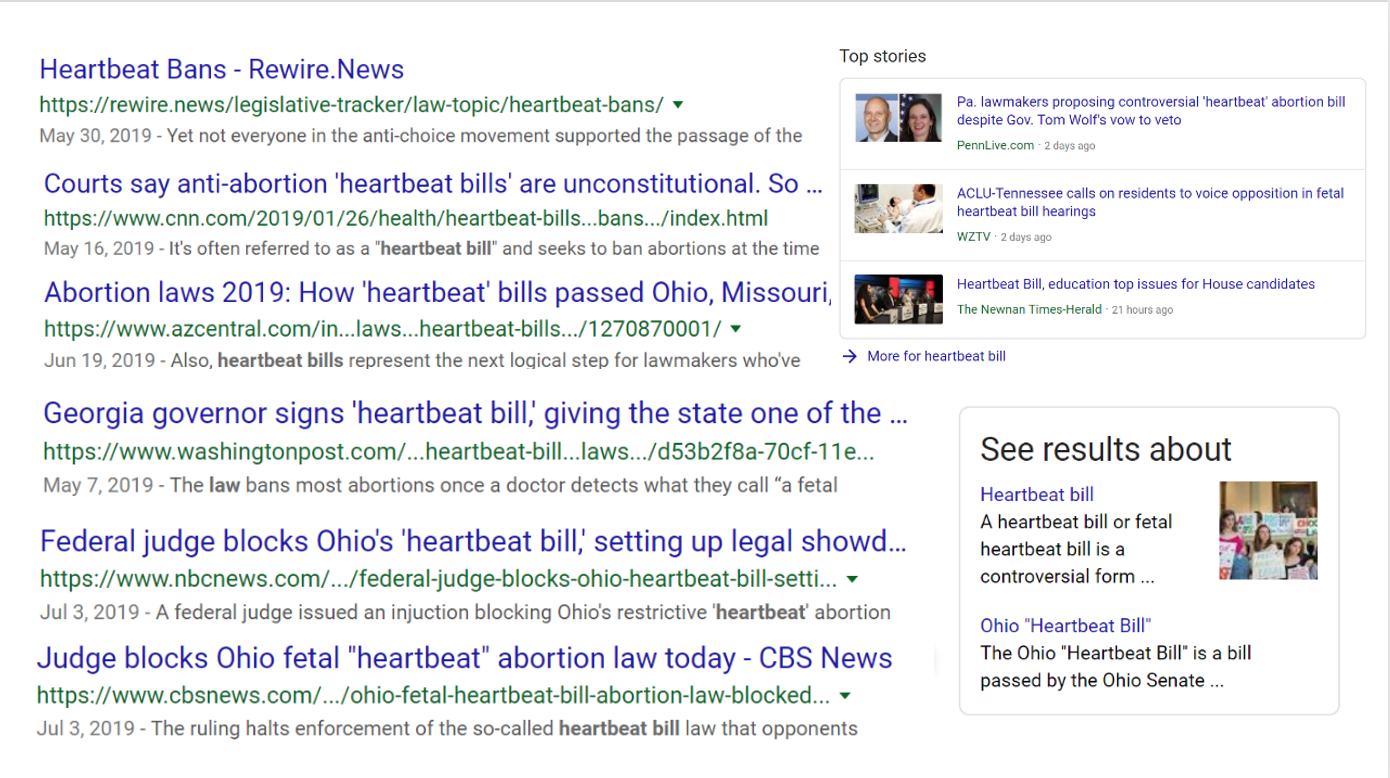
- When readers are exposed to headlines about the six-week abortion ban, all framed in quotes, using the term “heartbeat bill,” this language becomes more pervasive.
- Many of these articles may present compelling information by critiquing the six-week abortion ban; however, the problem is that these articles are using frameworks and language that are perpetuating a misconception.
- Many people who are reading these articles or only seeing these headlines may think to themselves, “There’s a heartbeat at six weeks? I had no idea.” That is because there is no heartbeat at six weeks.
- In reality, this bill would be the “detectable activity within a four-millimeter growth known as a fetal poll bill.”
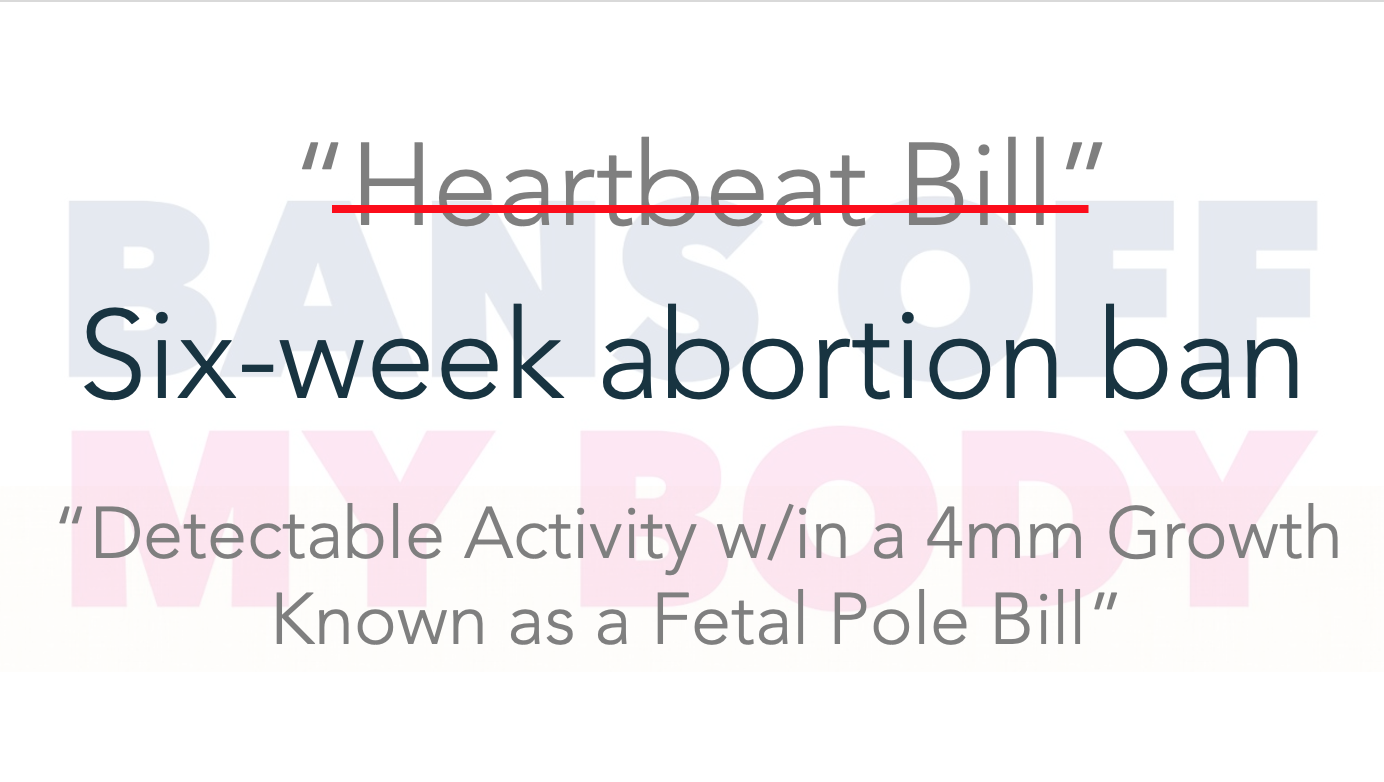
- When people or organizations post articles that are critiquing these bans, but that are still using this “heartbeat bill” language, the inaccurate phrase is being inserted into people’s heads. The language must be re-framed in order to increase advocacy and focus on solutions.
Preventing Victim-Blaming
- “Victim-blaming attitudes marginalize the victim/survivor and make it harder to come forward and report the abuse. If the survivor knows that you or society blames survivors for abuse, they will not feel safe or comfortable coming forward and talking to you.
- Victim-blaming attitudes also reinforce what the abuser has been saying all along; that it is the victim’s fault this is happening. Committing violence is the abuser’s choice. It is NOT the victim’s fault or responsibility to fix the violence that an abuser is committing against them. By engaging in victim-blaming attitudes, society allows the abuser to perpetrate relationship abuse or sexual assault while avoiding accountability for those actions.” Center for Relationship Abuse Awareness
- Victim-blaming attitudes and language are deeply pervasive and have manifested in ways that may be difficult to notice.
- For example, a victim-blaming phrase that has become prevalent is “she finally had the courage to come forward.”
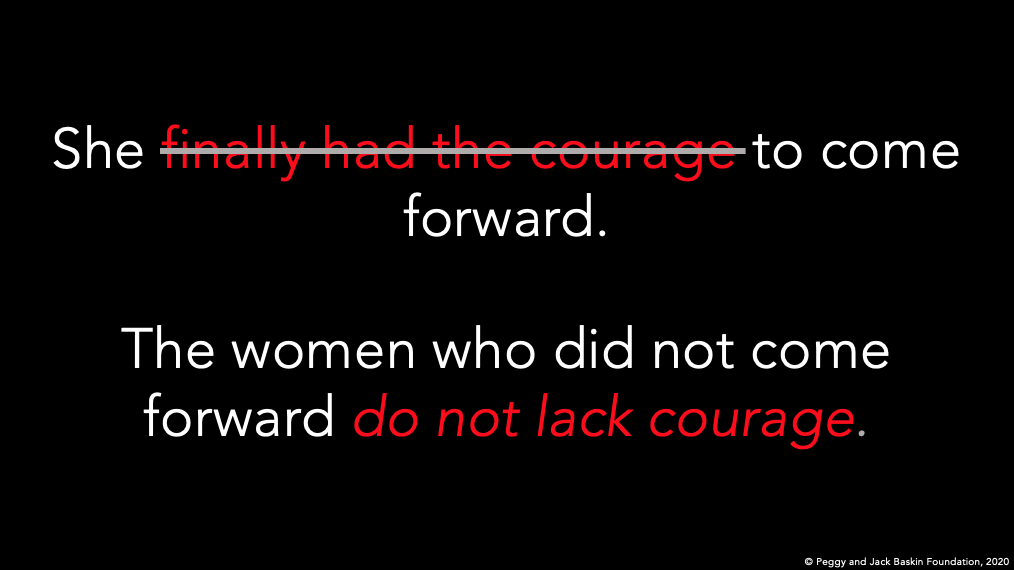
- The women who did not come forward do not lack courage.
- This is also relevant to when people say that she “had the courage to leave an abusive partner.” She may not have had the resources to leave an abusive partner, or it may not be safe to leave an abusive partner. It has nothing to do with courage.
- This nuance issue comes up, not just in the media, but throughout nonprofit and grantmaking materials or websites. A similar critique is applicable to the concept of “giving girls the courage” to come forward or to leave.
- Moving forward, it is important to frame that differently in RFPs, on websites, in any materials to Board or committee members, and across grantmaking systems.
This topic is especially relevant to expectations that survivors should tell their stories.
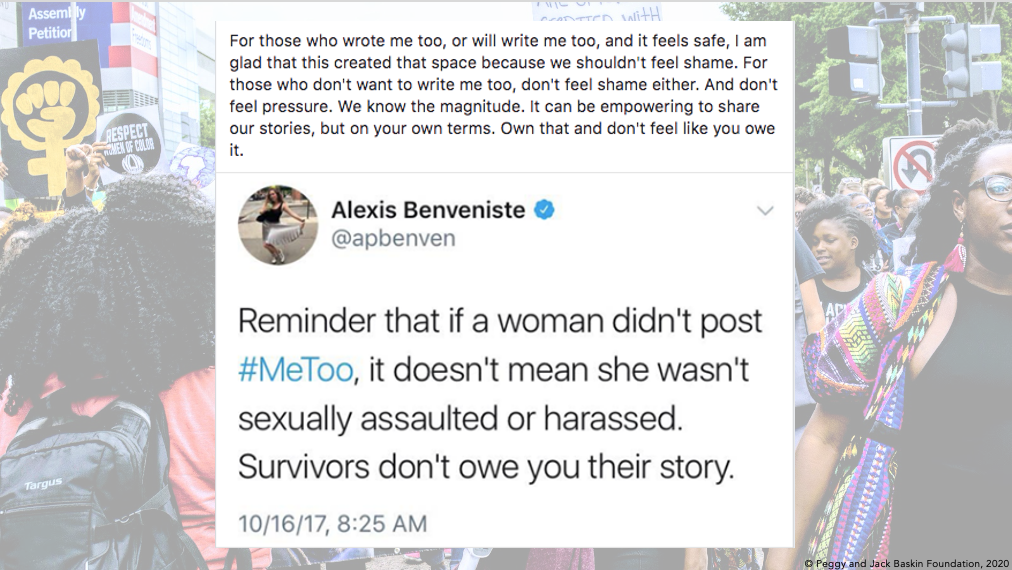
- Survivors don’t owe anyone their stories.
- If it is healing for people to tell their stories, we should create space for that and support people through that process.
- There should be no pressure. They are not the ones who are responsible for stopping that man from doing it to somebody else. It won’t stop rape culture by forcing survivors to tell their stories.
Preventing victim-blaming and ending rape culture begins by dismantling ideas such as these, and re-framing language to call for more accountability for perpetrators.
Avoiding Passive Voice
Reducing passive voice will reduce victim-blaming, and reducing victim-blaming will change rape culture.
- The below picture outlines an exercise by Julia Penelope.
- Each new line shows variations of the original statement; the statements decrease in efficacy as they move down the image.
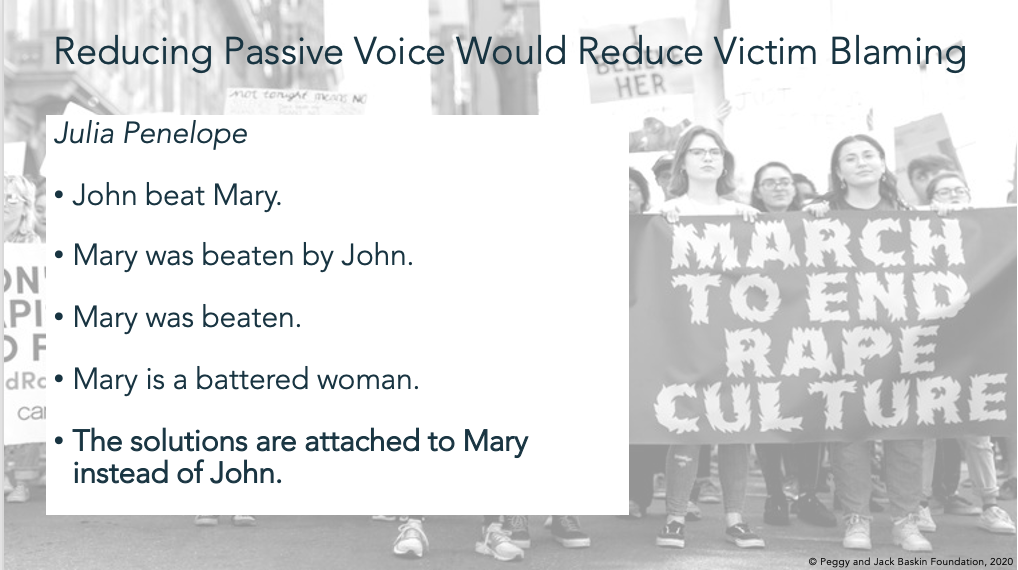
- By the final statement, “Mary is a battered woman,” there is no mention of the perpetrator.
- The entire focus is now on the identity of the survivor, which leads to the wrong conclusion and influences the resulting solutions.
To-Do: In order to reduce passive voice in all materials, bring this exercise to your Board and your colleagues, along with the re-write exercise presented in the next section. After completeing this exercise, talk about the impact of this sentence structure and the effect it has on the way that people think about these issues.
- The harmful impact of using passive voice is tied to the over-emphasis of the victim/survivor and under-emphasis of the perpetrators.
- Many new sources and media outlets are writing about major issues, such as relationship abuse, sexual violence, and racial injustice, with good intentions.
- However, oftentimes, the focus is put on the victims/survivors themselves, without mentioning who or what is causing this suffering. This can inadvertently contribute to victim-blaming.
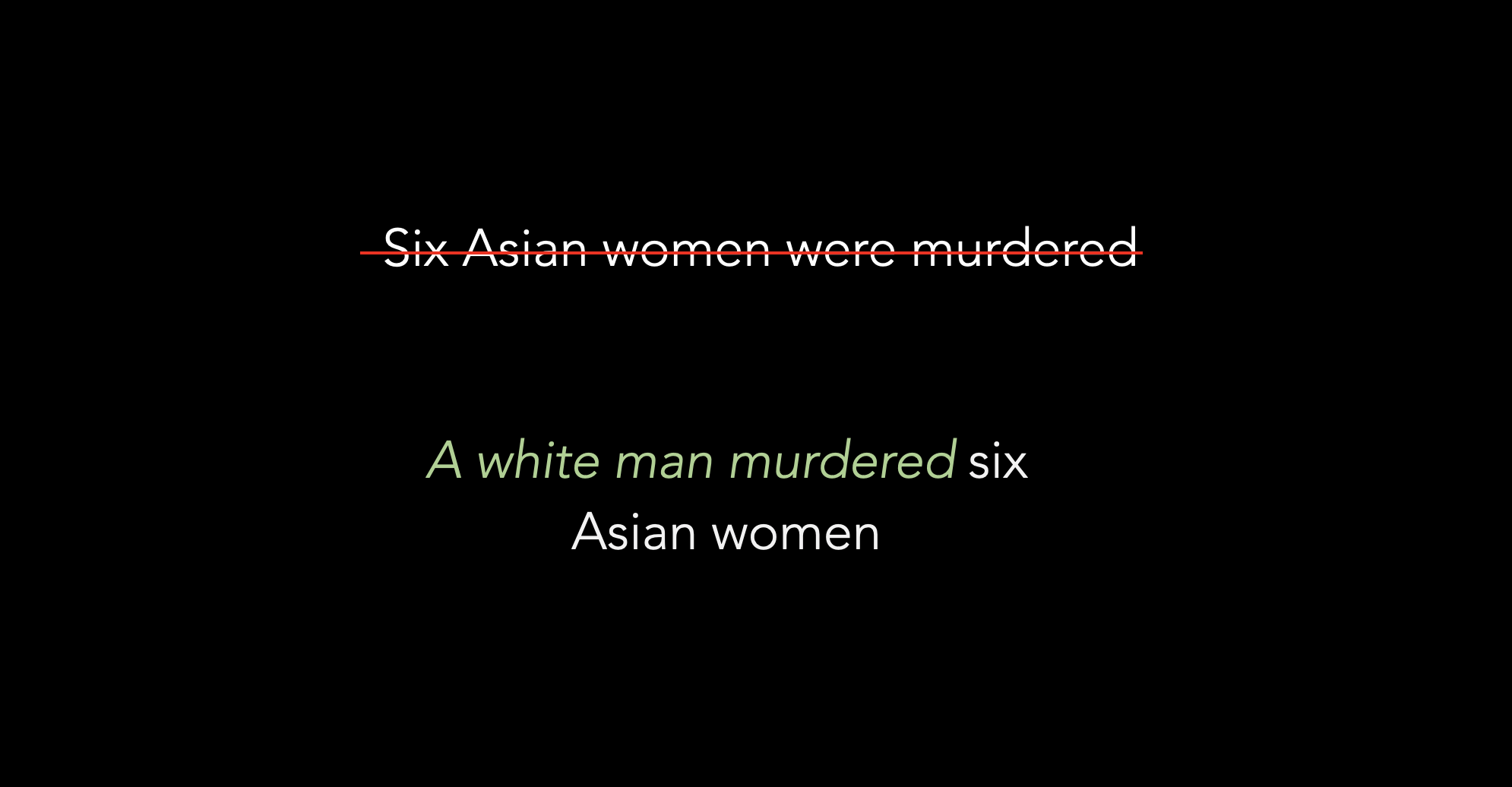
- What prevention solutions are attached to the first statement? What prevention solutions are attached to the second statement?
- The first statement is written in the passive voice; as a result, the solutions that come to mind when someone reads it are all connected to the victims.
- However, the second statement, which is written in the active voice, identifies the person committing the violence and frames the event as an action, a choice made by the perpetrator.
- With the second statement, the solutions that come to mind are linked to stopping to source of the violence, rather than focusing on the actions of the victims.
- The first statement does not address the root of the violence; the second statement brings to light the racism and misogyny of the person who chose to commit violence.

- “Native American women and girls are being killed or trafficked at rates far higher than the rest of the US population.” This sentence does not include any information on who is committing these crimes.
- Statistics and other data show that it is, in fact, men who are murdering and trafficking Indigenous women. However, this article doesn’t mention that fact.
- Women and girls are listed 17 times. However, the article never mentions who is committing this violence. The word “men” or “people harming” or “perpetrator” is in here zero times.
- It is essential to know who is committing these crimes because the perpetrators need to be held accountable.
- Right now, the framing of this article over-emphasizes the victimization of Indigenous women without highlighting the leadership of Indigenous activists.
- Additionally, this article is not making a statement that calls for a change to the toxic masculinity and racist beliefs that contribute to men feeling empowered to murder and traffick Indigenous women.
- This is a really important issue and is a topic that is constantly being ignored; it is one of the Peggy and Jack Baskin Foundation’s funding categories precisely because of this reason. It is important to highlight this topic, but to ensure that it is being discussed in the correct way, not in the passive voice.

- The above picture is a major example of language that is being used by the media, due to the increase of relationship abuse during COVID-19.
- There have been innumerable articles discussing this topic over the past year.
- The map in the photo shows the increase in men’s violence against women and gender-based violence during COVID.
- The current framing of the issue is “women face rising risk of violence during COVID-19,” which describes the violence as women just facing this risk, as if it happens in a vacuum.
- Again, this language does not mention who is committing the violence, thus limiting any solutions.

- This directly relates to the way in which articles or media will shift the focus away from the actual people committing these crimes or the actual root causes of these issues.
- An example of this concerning technique can be seen in articles that are discussing the rise in relationship abuse, which is important to highlight, that frequently get some things wrong, like alcohol.
- People who choose to rape and abuse cause sexual violence and relationship abuse. Alcohol does not.
Re-Writing Exercise
Rewrite the following paragraph and change all of the passive sentences to active ones:
“Millions of girls and women suffer sexual harassment in school, in the workplace, and on the street. One national study found that 83% of the girls responding reported being harassed at school. Women and girls of all racial and ethnic backgrounds are harassed by peers, teachers, and employers.”
Change all the passive sentences to active ones. So for example, instead of saying “How many girls were raped?” we’re going to say, “How many men raped girls?”
Once you have completed the re-writing exercise, take a look at the example re-write below.
Examples
–
–
–
–

